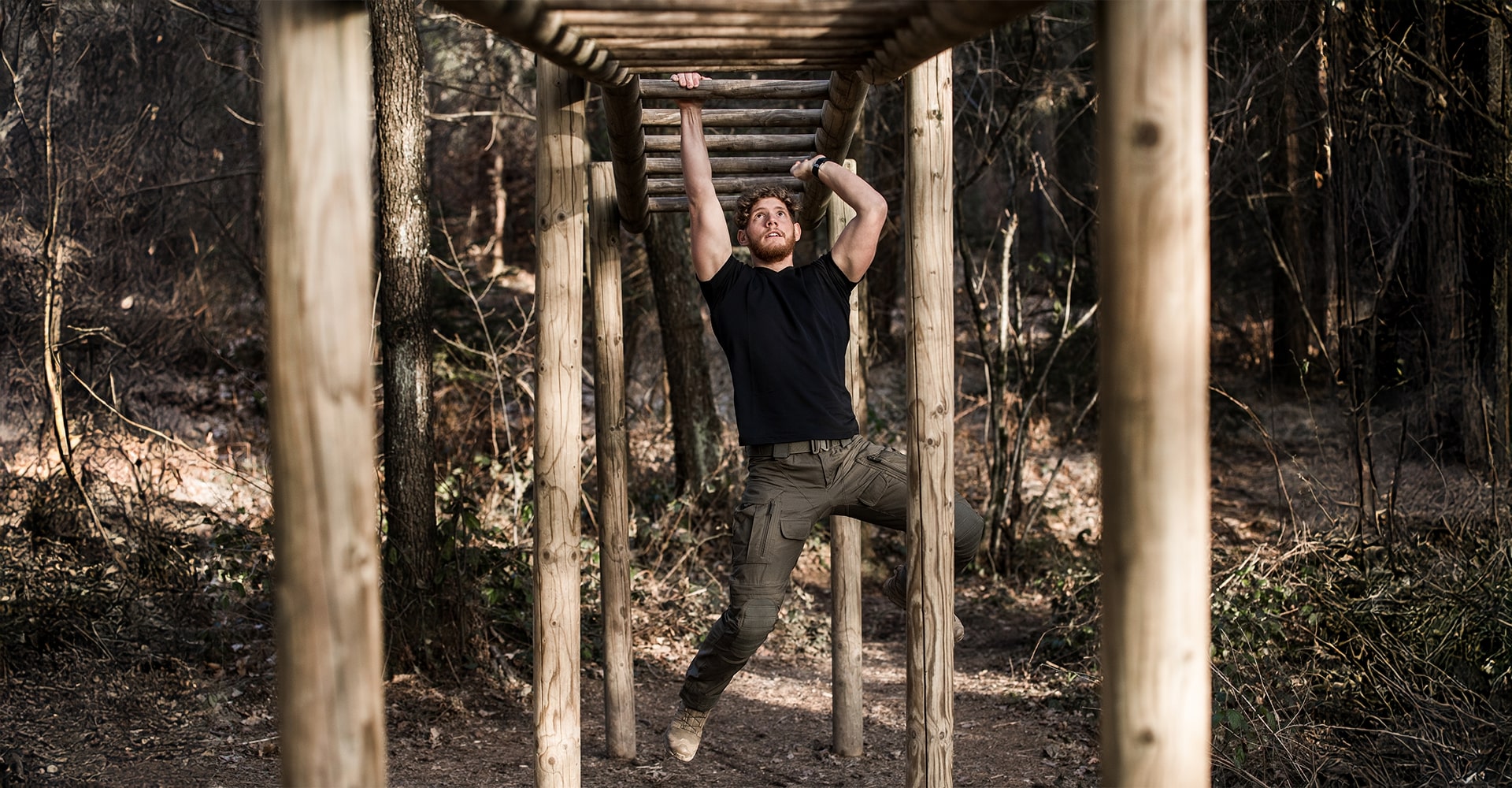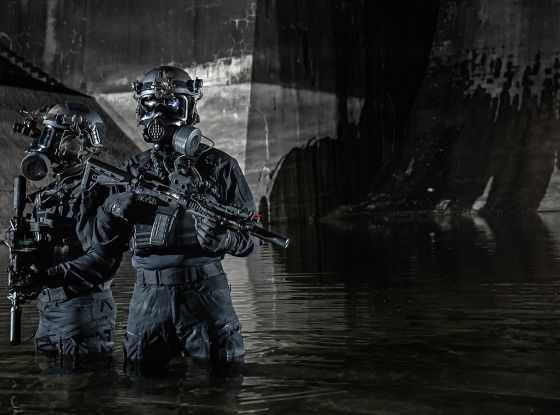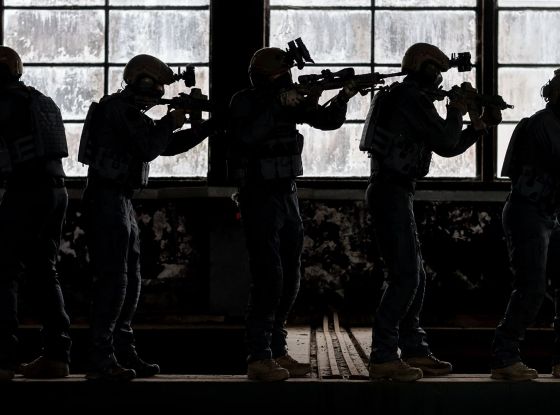Can the methods that trained elite operators in the past still produce today’s special forces?
In this blog post:
Soeren Suenkler—editor-in-chief of K-ISOM and veteran of global SOF operations—explores how Western special forces are rethinking the way they select, train, and develop elite operators. From cognitive assessments and virtual reality simulations to human performance labs, today’s programs focus not just on endurance and toughness, but on unlocking the full potential of each candidate for long, high-performance careers.
Author: Soeren Suenkler
The selection process and training for Western Special Operations Forces (SOF) from NATO and its allies remained unchanged for many decades. Certainly, there were occasional improvements and adjustments to the training, as well as modern equipment and operational procedures. The selection processes were also occasionally adjusted. But the big breakthrough never materialized. Yet, a fresh start to the selection and ongoing SOF training should have been underway a few years ago. This was largely prevented for 20 years by the Global War on Terror (GWOT) abroad. Other problems took priority.
With the return to the NATO core doctrine, a lot has changed for Western military special operations forces. Likewise, the selection and training of Western Tier 1 and Tier 2 police special operations units encompasses many more complex operational requirements within the context of internal security. Terrorism and narco cartels have now also arrived in Europe. Added to this, all have to face the current economy crisis, rapid social changes and illegal mass migration. All of these are extensive and complex issues.
Shifting Realities
At the same time, technology has made massive progresses, and psychology science also evaluates people and their actions or behavior differently than it did 20 years ago. This is due to the massive digitalization of everyday life, the scarcity of time and money, and an increasingly unstable situation in Europe. It has also been recognized that Western SOF operators who have spent 20 years fighting counterterrorism missions in Afghanistan, Iraq, Africa, and Syria are difficult to reintegrate into a rapidly changing society.
Occasional problems with SOF operators arose almost simultaneously in the USA, Great Britain, France, Germany, and Australia. Issues are social and private problems, as well as post-traumatic stress disorder (PTSD) in literally "worn-out" operational personnel. Early discharges, high levels of medical absence, and problems with leadership and suitability are the consequences. Remarks: These are not beginners or rookies who are unable to cope with the current situation, but highly trained and highly decorated SOF veterans. A massive waste of human resources that no longer fit into any system. However, it has been recognized that this must change. The shortage of personnel, a massive increase in tasks and missions, and the absolutely necessary process optimization are forcing authorities to significantly change, adapt, and in some cases completely rethink the recruitment and training of SOF operational personnel in the police force and military. We are currently entering a new era.
Special Forces Selection: Old Methods, New Problems
One of the problems in the past was the perception of the recruitment of SOF operators in the police force and military as a selection process only. The more candidates were pressed through and the more physically demanding the selection process was, the fewer candidates remained at the end. These candidates were supposed to be the later tip of the spear. They were then trusted to pass the further rigorous training for upcoming stressful missions. This method was based on the experiences of the last 50 years.
To understand what makes elite operators stand out, see our detailed analysis in What Makes Special Forces So Special.
Examples: The 21-day Special Forces Qualification Course (SFQC) of the US Army Green Berets (Tier 2) wipes out between 23% and 50% of all candidates who do not continue with training (average 35%). However, the personnel requirements are very high. Seven active Special Forces Groups (SFG) must be continuously staffed with replacement personnel. The failure rate for the 1st Special Forces Operational Detachment-Delta (Airborne) or 1st SFOD/CAG is probably much higher. The US Army does not publish any data on this. The same applies probably to the United States Naval Special Warfare Development Group (DEVGRU).
Other NATO Tier 1 SOF can serve as a comparison, such as the British Special Air Service (SAS) or the German Kommando Spezialkräfte (KSK) of the Bundeswehr. For the KSK, of approximately 120 to 150 candidates, only about a dozen typically pass the initial selection process. Selections are held twice a year, in April and October, but there have been occasions when not a single candidate successfully completed the SOF selection—a situation that can also occur with the UK SAS or US Delta Force.

Through optimization of processes, the number of successful graduates of the German SOF selection process has increased to average approximately 20 in recent years. However, in January 2024, the Bundeswehr reported that only 32 candidates had applied for Phase I of the KSK selection. Given a population of over 83 million people in Germany, this is alarmingly low! This does not compensate for the retirements and dropouts in the special operations forces unit. This is a problem that is also perceived in a similar way by the British SAS. The situation is similar with the German Tier 1 police unit GSG 9 of the Federal Police. The recruitment of operational forces hardly replaces routine or forced leaves. This is a fact and, however, affects all Western special operations forces units, both police and military, and is not a new issue.
Using the previously applied methodology, one would simply have to increase the number of SOF candidates. Of 200, 20 candidates would then make it. Of 500, 50, and so on. However, this logic doesn't work. One reason for this problem is the real demographic change (in Europe). The pool of young people meeting the basic requirements—appropriate citizenship, physical fitness, and interest in serving in the armed forces or police—is shrinking. At the same time, a highly competitive civilian job market draws much of this potential straight from schools. The result is clear: the human potential available for SOF is declining, even as the scope and complexity of their tasks continue to grow.

Reactivating conscription to forcibly increase the pool of potential candidates is under political discussion in almost all Western countries, but it is unlikely to solve the problem.
SUBSCRIBE TO UNLOCK OUR EXCLUSIVE CONTENT
Enter your email and get timely updates and relevant intel on tactical topics directly to your inbox.
You are signing up to receive updates via e-mail from which you can opt out at any time. Visit our privacy policy for more info.
Transforming SOF Selection and Training for the 21st Century
Rather, it's now about making better use of limited potential, with more process optimization and flexibility. Today’s SOF operators face a very different reality than previous generations: they are required to remain in service well into their forties, deliver higher levels of performance, and operate with far greater adaptability. To meet these demands, the U.S. Army expanded the SOCOM Warrior Athlete concept, itself rooted in earlier programs such as the Objective Force Warrior and Future Force Warrior initiatives that aimed to redefine soldier readiness. At the same time, new approaches like the Cognitive Warrior Project—currently under intense debate—are shifting focus toward enhancing mental resilience and decision-making under pressure. The U.S. Marine Corps follows a similar path through its Human Performance, Training and Education (HPT&E) Program, underscoring a broader trend: modern military SOF training is no longer limited to building physical strength and endurance, but instead seeks to create well-rounded special operations forces operators who can sustain peak performance across longer careers and more complex missions. We’ve explored these evolving methodologies in depth in our article on Special Operations Forces: Future Training.
At their core, most current Western SOF selection and training procedures remain rooted in the lessons of the British SAS, itself shaped by World War II experiences. The underlying assumption has long been that methods effective in that era must still hold value today. Yet this is not necessarily the case. While NATO members such as Great Britain, the Netherlands, and Belgium continue to adhere to the SAS/Commando philosophy—with certain positive adaptations over time—they also risk clinging too tightly to outdated models. It’s important to note, however, that each SOF generation reflected the needs of its era and represented the best available approach at the time.
The German KSK, for instance, deliberately broke with tradition and took a more progressive path. Its highly selective screening procedure (EAV) of the 1990s evolved into the broader assessment process (EFV) of the 2000s and has since developed into today’s modern potential assessment (PFV). The focus has shifted from simple elimination to cultivating a candidate’s potential—a fundamentally different approach to shaping future SOF operators.
"In the almost three decades of its existence, the KSK has accumulated a large portfolio of information and experience from its numerous deployments. The unit can therefore define more precisely what potential an applicant must possess. In international comparison, several nations are also striving to adapt their selection procedures, as they have made similar observations. Individual testing makes it possible to examine the applicant and their individual performance capabilities more closely."
The core of the SOF assessment is less focused on physical aspects only. Conversely, more cognitive elements are tested. The future candidate for serving in a special operations unit must be able to learn better and faster, be more adaptive, and more resilient to external and internal stress and disruptive factors. This is a highly complex psychological test under enormous stress and exhaustion that goes far beyond forced marches and pull-ups. To understand the mindset required for this, see Special Forces Mindset: How to Prepare.
The German concept now envisages two phases.
"In Phase 1, a week of physical tests and computer-assisted psychological selection procedures determine the soldiers' daily routine. Officers are subject to higher standards in the area of cognitive performance in the computer tests than enlisted soldiers and non-commissioned officers. In the first phase, physical performance and the trainability of required skills are assessed. In addition, participants must undergo several psychological and cognitive tests. These are administered by the KSK's psychological service. Only those applicants who have the potential to later become among the best are admitted to the next phase."

Incidentally, the former KSK ten-week program has been replaced by a private, self-directed preparation program. Participants must demonstrate a high degree of intrinsic motivation and independence during their own preparation. These are essential character strengths for future SOF operators. This saves the Bundeswehr time and resources, but does not necessarily lead to more suitable candidates. We cover more about the detailed Special Forces Selection Process in another article.
In Phase II (including a “Hell Week” with forced marching performance) of the potential assessment process, quote:
"...medical data is collected, including blood sugar levels, pulse, and other specific performance diagnostic values. The soldier is equipped with a transmitter to constantly track his speed and location. From now on, medical data will be monitored around the clock for the safety of the soldiers and to optimize testing. This is done in cooperation with the Sports Science Faculty of the Bundeswehr University in Munich. As in Phase 1, the selection-of-the-best applies. At no point in the process does the applicant know whether their demonstrated performance is sufficient to pass. The evaluation takes place only at the end of the week, and then the participants learn whether they have been admitted to training or not."

According to the Bundeswehr, approximately one-third of applicants currently make it through Phases I and II. The goal, purpose, and significance of the newly structured candidate selection process is not crude selection, but rather the critical selection of individuals who have the potential for further complex training and personal development. These individuals must learn faster in their later service, be more adaptive to rapidly changing situations, and be more resilient to internal and external disruptive factors. If they were to remain at the same level as their previous successful selection, they would be unsuitable. This is why it is referred to as "potential for further development."
Specifically: Previously a KSK soldier would have been fully trained after around seven years, today this must be done in about three years to be combat-ready for NATO. The SOF training has been streamlined and processes optimized. Likewise, the operator can find himself in a hybrid conflict zone within a very short space of time. Added to this are propaganda, agitation, and diversion, as well as challenging intelligence operations by enemy forces and notorious domestic disruptive groups, which special operations forces must also cope with. This is not easy and requires a high degree of intrinsic motivation, stress resistance, universal education, and cognitive skills. This has nothing to do with Colonel Stirling and Paddy Maine in desert warfare or the nostalgic hunt for Osama Bin Laden. Since 2014 (the Crimean crisis), it's been a completely different league of warfare, one in which military SOF operators must be deployed. It's time to understand this. For a broader perspective on evolving NATO missions, see NATO Special Forces: New Areas of Operations.
The situation is very similar with Western police Tier 1 SOF units such as German GSG 9 and French GIGN (Groupe d'intervention de la Gendarmerie nationale) or EKO "Cobra" in Austria. The candidates come from a social crisis (in Europe) and, if they successfully complete their selection, must perform much more at all levels than before, with maximum process optimization. Regeneration phases will be much shorter in the future, and external disruptive factors will increase significantly. Furthermore, fully trained SOF personnel must be available for longer periods overall (age 40+), while at the same time, on average, young SOF operators spend less time in the SOF unit itself (approximately seven to ten years).
The Future of SOF Training: VR and Human Performance Labs
Process optimization begins within the SOF unit itself and it’s based on the selected SOF candidate. They must be receptive to the new methodology and program and open to change. Otherwise, it won't work.
One of these is the introduction of immersive virtual reality SOF training systems. Virtual reality (VR) is the representation and simultaneous perception of apparent reality and its physical properties in a real-time, computer-generated, interactive virtual environment. These can represent sequences of actions and situational training in a relatively realistic way in space and time using VR goggles, while simultaneously conserving resources and real time. Mission profiles and tactical situations can be practiced and rehearsed here. This even goes so far that existing floor plans of real buildings (airports, banks, embassies, schools, hospitals, consulates, etc.) can already be fed into the digital system and made available to trainees. Likewise, situations involving children or animals, as well as darkness, fire, and noise, that are difficult to create in reality can be digitally reproduced. This can be repeated as often as required, even in changing scenarios. In addition, there is comprehensive, objective, and measurable evaluation. Of course, a VR SOF training system cannot replace live fire. Nor can it replace practicing on a real target or dealing with complex medical situations. However, it does speed up the preliminary SOF training considerably. Mistakes are still acceptable. You learn from mistakes. Interestingly, the age and generation of the trained personnel plays a role here. Operators in their 20s find their way around much faster and more accurately than the older still analog SOF generation (age 40+). Modern VR training systems have already been introduced by the Hesse State Police (Germany) and the German Bundeswehr's KSK, as well as by other international Tier 1 SOF units.
A further problem is the advanced age of the GWOT SOF generation and the shorter service time of newly generated SOF operators. An operator who, for example, has a parachuting accident at the age of 40+ will probably never be able to fully recover due to his age and will therefore no longer be fit for full duty in the SOF unit or will only be available to a limited service. A young SOF operator must already today at age 20+ undergo a state-of-the-art, supervised, targeted, multifunctional physical program with planned regeneration phases in a controlled manner in order to be still operational at the age of 40 and over. The introduction of Human Performance Labs at the German GSG 9 of the Federal Police and the KSK of the Bundeswehr is optimally supporting this process. The Human Performance Lab combines expertise from physiotherapy, performance physiology, and training science in the police force and military. While sport and fitness was once viewed as a blunt performance with high levels of wear and tear on the body, today this aspect is viewed scientifically and from the perspective of a holistic and integrated approach.

Today, SOF operators must be able to deliver consistently high levels of performance up to retirement without becoming a medical problem sooner or later. This is ensured now by an entire team of physical education instructors, sports scientists, and physical therapists. It's no longer enough to just be tough on themselves; the smart SOFs also understands when they need help and guidance. A Human Performance Lab can certainly provide this. Human Performance Labs have now been introduced and established in all Western Tier-1 SOF units and are now supporting an entire generation of SOF from the police force and military into the future.
Conclusion
The evolution of selection procedures, advanced training methodologies, and science-backed support for cognitive and physical performance is shaping the next generation of SOF operators. Success in today’s complex operational environment depends on adaptability, resilience, and continuous learning. Military SOF must operate across hybrid battlefields, while police SOF face sophisticated internal threats. The ability to respond effectively to these challenges is now central to mission success.





